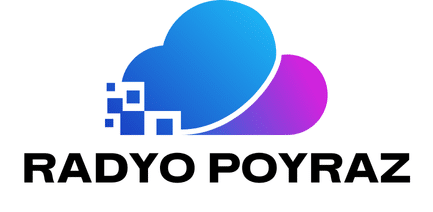In today’s fast-paced digital landscape, serverless computing has emerged as a game-changer. It allows you to focus on your application code without worrying about server management or infrastructure. One of the most powerful serverless services on the market is Google Cloud Functions. This article will walk you through the process of implementing a serverless backend using Google Cloud Functions, making your project efficient, scalable, and cost-effective. Whether you are a seasoned developer or someone new to cloud solutions, this guide is tailored to provide you with valuable insights.
Why Choose Google Cloud Functions for Your Serverless Application?
To fully appreciate Google Cloud Functions, it’s crucial to understand why serverless computing is so transformative. Unlike traditional server-based models, serverless architecture allows you to run functions in response to events. This means you only pay for what you use, making it cost-efficient. Additionally, it eliminates the complexities of server management, enabling you to deploy code swiftly.
A lire aussi : What are the steps to set up a secure NFS server on Ubuntu for shared storage?
Google Cloud Functions is a premier choice for several reasons. It integrates seamlessly with other Google Cloud services such as Cloud Storage, API Gateway, and Firestore. This integration facilitates a cohesive environment for your application, allowing for smooth data flow and interaction between services. Also, Google Cloud Functions supports various programming languages, including Node.js, Python, and Go, giving you flexibility in your development endeavors.
Setting Up Your Google Cloud Project
Before diving into the implementation, the first step is to set up a Google Cloud project. This involves creating a new project on the Google Cloud Platform (GCP) and enabling the required APIs and services.
A découvrir également : How can you use Prometheus Alertmanager to manage alerts in a Kubernetes cluster?
- Create a New Project: Log in to the GCP Console and create a new project. Give it a distinctive name to easily identify it.
- Enable APIs: Navigate to the API Library and enable the Cloud Functions API, Cloud Build API, and Cloud Storage API. These are essential for deploying and managing your functions.
- Set Up Billing: Ensure you have a billing account attached to your project. Google offers a free tier, but for extensive use, you might need to enable billing to avoid disruptions.
Once your project setup is complete, you are ready to write and deploy your first cloud function.
Writing Your First Cloud Function
Google Cloud Functions allows you to write, deploy, and manage functions in a variety of programming languages. For this example, we will use Node.js to create a simple HTTP function that responds with a “Hello, World!” message.
- Initialize Your Project: On your local machine, create a new directory for your project. Navigate to this directory using your terminal and initialize a new Node.js project:
mkdir my-cloud-function cd my-cloud-function npm init -y - Write the Function: Create an
index.jsfile and add the following code:exports.helloWorld = (req, res) => { res.send('Hello, World!'); }; - Add Dependencies: Although this basic function doesn’t require additional dependencies, it’s a good practice to manage your dependencies using
package.json. If you need to install modules, you can do so using npm. - Deploy the Function: Use the
gcloudcommand-line tool to deploy your function. Ensure you have thegcloudSDK installed and authenticated with your Google Cloud project:gcloud functions deploy helloWorld --runtime nodejs14 --trigger-http --allow-unauthenticated
Once deployed, your function will be accessible via an HTTP endpoint provided by Google Cloud.
Integrating Cloud Storage with Your Function
One of the powerful features of Google Cloud Functions is its seamless integration with Cloud Storage. This enables you to create functions that respond to events such as file uploads, deletions, or modifications in a storage bucket. Let’s explore how you can create a function that triggers when a new file is uploaded to a Cloud Storage bucket.
- Create a Storage Bucket: In the GCP Console, navigate to Cloud Storage and create a new bucket. Name it something unique, like
my-function-bucket. - Write the Function: Create a new function that will be triggered by the file upload event. Add the following code to your
index.jsfile:const { Storage } = require('@google-cloud/storage'); const storage = new Storage(); exports.fileUploadTrigger = async (event, context) => { const bucketName = event.bucket; const fileName = event.name; // Your custom logic here console.log(`File ${fileName} uploaded to ${bucketName}`); }; - Deploy the Function: Use the
gcloudCLI to deploy your function, specifying the storage bucket as the trigger:gcloud functions deploy fileUploadTrigger --runtime nodejs14 --trigger-resource my-function-bucket --trigger-event google.storage.object.finalize
With this setup, every time a file is uploaded to my-function-bucket, the fileUploadTrigger function will execute, allowing you to automate workflows such as file processing or data extraction.
Managing and Monitoring Your Functions
As your serverless application grows, it’s essential to manage and monitor your Google Cloud Functions effectively. Google Cloud Platform offers robust tools to help you track performance and troubleshoot issues.
- Logging and Monitoring: GCP integrates with Cloud Logging and Cloud Monitoring to provide real-time insights into your functions. You can view logs, set up alerts, and monitor metrics like execution times and error rates.
gcloud logging read "resource.type=cloud_function AND resource.labels.function_name=fileUploadTrigger" - Scaling and Performance: Google Cloud Functions automatically scales based on incoming traffic. However, you can set limits to control costs and manage performance. Use the GCP Console to configure memory allocation, timeout settings, and max instances for each function.
- Versioning and Rollbacks: It’s crucial to manage versions of your functions, especially in production environments. GCP allows you to deploy new versions of your functions and roll back to previous ones if issues arise. Keep track of your versions and use labels to manage deployments efficiently.
Implementing a serverless backend using Google Cloud Functions offers a multitude of benefits, from reduced operational overhead to seamless scalability. By focusing on your code and leveraging Google’s cloud services, you can build robust, efficient, and cost-effective applications. Whether you are triggering functions from HTTP requests, integrating with Cloud Storage, or managing and monitoring your deployments, Google Cloud provides the tools and infrastructure to support your serverless architecture.
In conclusion, Google Cloud Functions is a powerful solution for modern serverless application development. By following the steps outlined in this article and utilizing the rich feature set of GCP, you can create a backend that is both scalable and easy to manage. Embrace the future of serverless computing and transform the way you build and deploy applications.
Happy coding!






